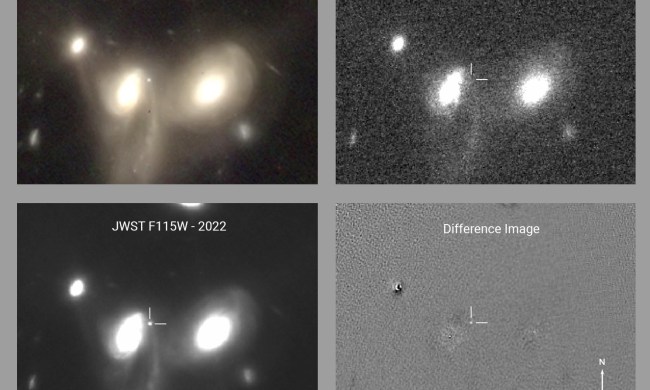If NASA scientists were more accurate, Spitzer would’ve died years ago. More than a decade after its launch, the infrared space telescope still captures and transmits beautiful data about the cosmos.
But good things must come to an end and Spitzer’s deep space gaze is no different. Last week, on the anniversary of the telescope’s launch, NASA announced Spitzer would be entering its final, two-and-a-half-year phase in October. Dubbed “Beyond,” Spitzer’s last mission will keep the telescope’s sensors pointed into outer space until after the James Webb Space Telescope launches in 2018.
Over the years, Spitzer has exceeded expectations and delivered awe-inspiring images and information — from a 360-degree infrared panorama of the Milky Way to the discovery of a massive ring around Saturn, hundreds of times larger than the one seen in visible light.
“Spitzer is operating well beyond the limits that were set for it at the beginning of the mission,” Michael Werner, the project scientist for Spitzer at NASA’s Jet Propulsion Laboratory, said in a press release. “We never envisioned operating 13 years after launch, and scientists are making discoveries in areas of science we never imagined exploring with the spacecraft.”
As with most aging machines, Spitzer will face a number of challenges in the last leg of its mission. For one, the telescope’s slow orbit behind the Earth means the distance between the Spitzer and the planet is constantly growing. In order to compensate for this and ensure that signals are still received, scientists have to alter some of the mechanics — such as the autonomous safety systems — that have kept Spitzer functioning for so long.
“Balancing these concerns on a heat-sensitive spacecraft will be a delicate dance, but engineers are hard at work preparing for the new challenges in the Beyond phase,” said Mark Effertz, Spitzer chief engineer at Lockheed Martin Space Systems Company, which built the spacecraft.
This wouldn’t be the first time Spitzer faced such significant challenges: In 2009, when the spacecraft ran out of coolant needed for some of it’s cameras, the mission had to be practically reinvented, switching from “cold” to “hot” operations. But, if there’s one thing the Spitzer mission has demonstrated over the past decade, it’s just how resilient and dynamic the space telescope can be.


